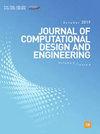一种用于低光和小物体检测的改进YOLOX方法:隧道施工现场PPE
IF 6.1
2区 工程技术
Q1 COMPUTER SCIENCE, INTERDISCIPLINARY APPLICATIONS
引用次数: 1
摘要
隧道施工现场由于光线不足,会影响能见度并导致事故,对工人构成重大安全风险。因此,识别个人防护装备(PPE)对于防止伤害和死亡至关重要。一些研究已经解决了隧道施工现场的光线条件较低和从远处拍摄图像所带来的挑战。在这项研究中,我们提出了一种改进的YOLOX方法和一个新的数据集来检测弱光和小PPE。我们改进了YOLOX的结构,在主干中加入ConvNeXt模块进行深度特征提取,并引入第四个YOLOX头来增强多尺度预测。此外,在与其他八种方法进行比较后,我们采用CLAHE算法对低光图像进行增强。因此,改进的YOLOX方法实现了86.94%的mAP,比原始模型高4.23%,优于选定的最新技术。它还将小对象类的AP平均提高了7.17%,实现了22 FPS的实时处理速度。此外,我们构建了一个包含8,285个低光照实例和6,814个小光照实例的新数据集。改进的YOLOX方法提供了准确和高效的探测性能,可以减少隧道施工现场的安全事故。本文章由计算机程序翻译,如有差异,请以英文原文为准。
An improved YOLOX approach for low-light and small object detection: PPE on tunnel construction sites
Tunnel construction sites pose a significant safety risk to workers due to the low-light conditions that can affect visibility and lead to accidents. Therefore, identifying personal protective equipment (PPE) is critical to prevent injuries and fatalities. A few research has addressed the challenges posed by tunnel construction sites whose light conditions are lower and images are captured from a distance. In this study, we proposed an improved YOLOX approach and a new dataset for detecting low-light and small PPE. We modified the YOLOX architecture by adding ConvNeXt modules to the backbone for deep feature extraction and introducing the fourth YOLOX head for enhancing multiscale prediction. Additionally, we adopted the CLAHE algorithm for augmenting low-light images after comparing it with eight other methods. Consequently, the improved YOLOX approach achieves an mAP of 86.94%, which is 4.23% higher than the original model and outperforms selected state-of-the-art. It also improves the AP of small object classes by 7.17% on average and attains a real-time processing speed of 22 FPS. Furthermore, we constructed a novel dataset with 8,285 low-light instances and 6,814 small ones. The improved YOLOX approach offers accurate and efficient detection performance, which can reduce safety incidents on tunnel construction sites.
求助全文
通过发布文献求助,成功后即可免费获取论文全文。
去求助
来源期刊

Journal of Computational Design and Engineering
Computer Science-Human-Computer Interaction
CiteScore
7.70
自引率
20.40%
发文量
125
期刊介绍:
Journal of Computational Design and Engineering is an international journal that aims to provide academia and industry with a venue for rapid publication of research papers reporting innovative computational methods and applications to achieve a major breakthrough, practical improvements, and bold new research directions within a wide range of design and engineering:
• Theory and its progress in computational advancement for design and engineering
• Development of computational framework to support large scale design and engineering
• Interaction issues among human, designed artifacts, and systems
• Knowledge-intensive technologies for intelligent and sustainable systems
• Emerging technology and convergence of technology fields presented with convincing design examples
• Educational issues for academia, practitioners, and future generation
• Proposal on new research directions as well as survey and retrospectives on mature field.
 求助内容:
求助内容: 应助结果提醒方式:
应助结果提醒方式:


